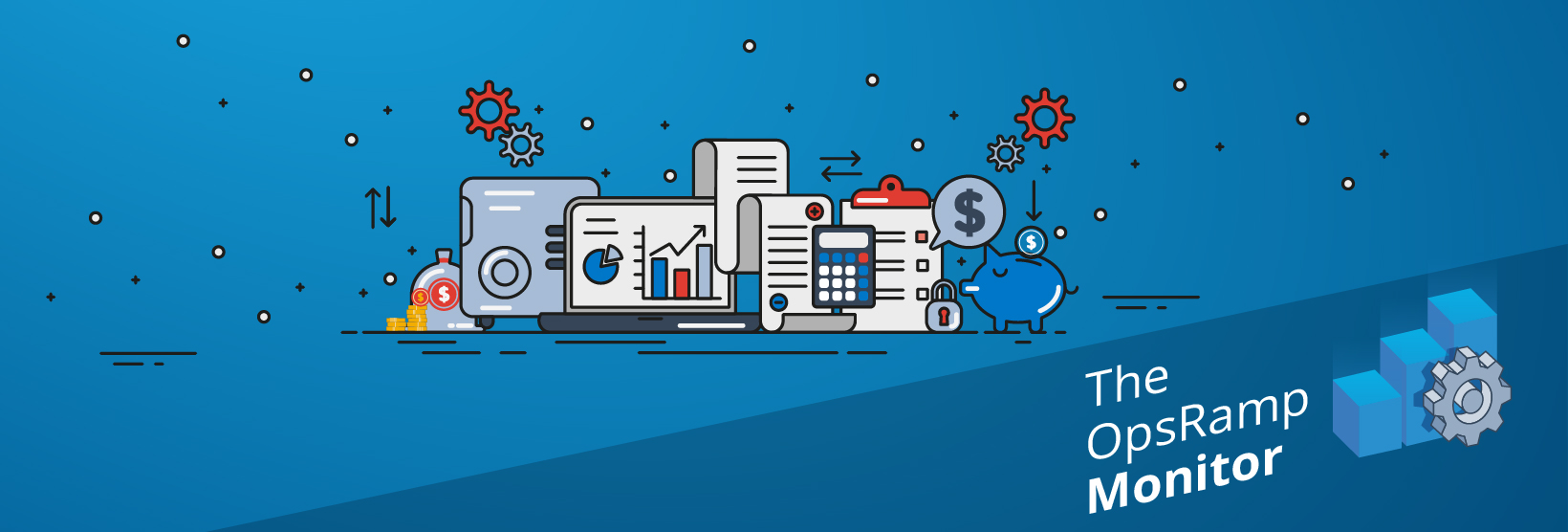Top Weekly Reads in IT I&O
The world of IT operations management, DevOps, AIOps, and cloud is always changing. That’s why there’s The OpsRamp Monitor: OpsRamp’s top weekly review of interesting developments and emerging trends in digital operations. Subscribe to our blog for the latest and greatest. And stay on top of everything Ops.
Tooting our own horn: Startups need money to grow and continue the innovation pipeline. Luckily for us, three great partners are fueling our next phase of growth as we announced yesterday a $37.5M raise led by Morgan Stanley, along with Hewlett Packard Enterprise (HPE) and our original investor Sapphire Ventures. Silicon Angle did a nice job of encapsulating what we do: “The platform uses machine learning to look for technical issues such as latency spikes, malfunctioning servers and network outages. This data is shown in a visual map that enables administrators to see what business applications are affected when a given component of their infrastructure experiences problems. OpsRamp has layered a number of additional automation features on top including an alerting system that notifies IT staff when something goes wrong.”
TechCrunch gave the bigger picture of what’s going on in IT orgs these days: “Given that hybrid clouds only increase the workload for IT organizations and introduce additional tools, it’s maybe no surprise that investors are now interested in companies that offer services that rein in this complexity. If anything, we’ll likely see more deals like this one in the coming months.” Channel pubs including Channelnomics and CRN covered the news from that viewpoint. Here’s CRN’s take: “Part of the funding haul will be spent on enabling the startup's diverse channel and boosting the profitability of systems integrators, resellers and MSPs, Brian Hartwell, who joined the San Jose, Calif.-based startup in November as its first vice president of worldwide sales, told CRN.”
Is I&O’s future grim? Forrester analyst Charles Betz discussed the pressures on I&O roles in this brief. As cloud-native infrastructure, automation and DevOps take center stage, what does this mean for the in-house infrastructure people? “In the world of self-service consumption, the traditional tools and tasks of I&O teams are subject to constant overhaul and replacement.” Betz says he doesn’t believe I&O roles will go away but will change, evolving into “platform operations” and a focus on the lower levels of the stack. But what does platform operations mean, exactly? In his newsletter, Donnie Berkholtz, VP of IT Service Delivery at CWT, comments on the brief: “Product teams are picking up more, but hopefully they're cross-functional including product mgmt, dev, ops, etc so this is more of a re-org than a decrease.” Okay, back to work.
When IT Ops looks expensive. The perfect way to keep your job and show your worth is by helping your company avoid these top IT operations cost traps. The author, Klaus Haller, a senior IT project manager and solution architect, dives deep into the frequency in which execs get sticker shock at the end of a project, when not factoring in the cost to support and maintain the new technology or architectural change.
The myth of “free” open source software is just one example he shares, perfectly told: “Consider not only the effort needed to maintain self-written lines of code. Ensure to estimate as well the effort to operate and maintain the interfaces and ‘free’ components that will be added to your solution.” To sum up, cost overruns in IT projects often stem from poor communications. One would think that with better upfront planning and discussions between all stakeholders, teams could avoid ugly financial surprises later. Squad goals!
Survey says: IT monitoring needs help. A survey of 800 CIOs in large enterprises found that IT and cloud operations teams receive 2,973 alerts a day from their monitoring and management tools. The study, conducted by Vanson Bourne and commissioned by Dynatrace, found that IT teams spend an average of 15% of their time trying to filter alert noise for the relevant alerts. That’s more than one hour daily per employee, combing through data with no guarantee of a positive outcome.
No doubt, confusion from data overload is making it hard to maintain consistent performance: 70% of IT teams have experienced problems that should have been prevented. All this effort with mediocre return is eating up budgets too. Improving alert management will require intelligent automation and the know-how to responsibly operate an automation-driven workflow.
EX needs help too. Akin to how teenagers feel about their conscientious, hard-working parents, about 40 percent of employees feel that their IT department and workplace technology experience is “completely out of touch with their needs,” says Nicholas McQuire, vice president for enterprise research at CCS Insight, in this CIO.com story. “Companies are slowly realising that the employee experience is as valuable, if not more in some cases, as the customer experience but many still have a ways to go on this,” McQuire continues.
Adaptability usually trumps complexity. Whether it’s dealing with mother-in-laws, bad weather while on vacation or the eating preferences of toddlers, adaptability is critical for success in both life and software. “Resilience in business-critical software is derived from the capabilities of the workers and from the deliberate configuration of the platforms, the workspace, and the organization so that those people can do this work,” writes Adrian Coyler, in this article about coping with complexity which draws upon many IT operations examples. “It is adaptability that allows successful responses to anomalies and successful grasping of new opportunities,” he continues. This is an intriguing brain stretcher, so a shot of espresso before reading is advised.
Next Steps:
- Learn about OpsRamp at a Glance.
- Read our report: How to Beat the Cloud Skills Crisis.
- Subscribe to the OpsRamp Blog!






